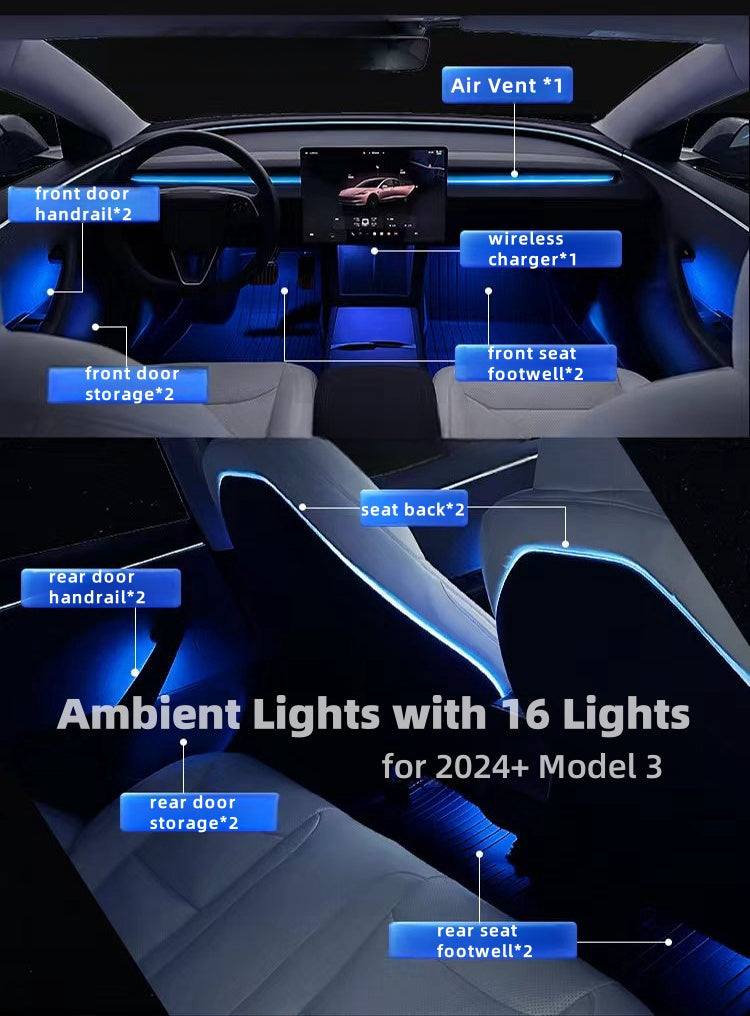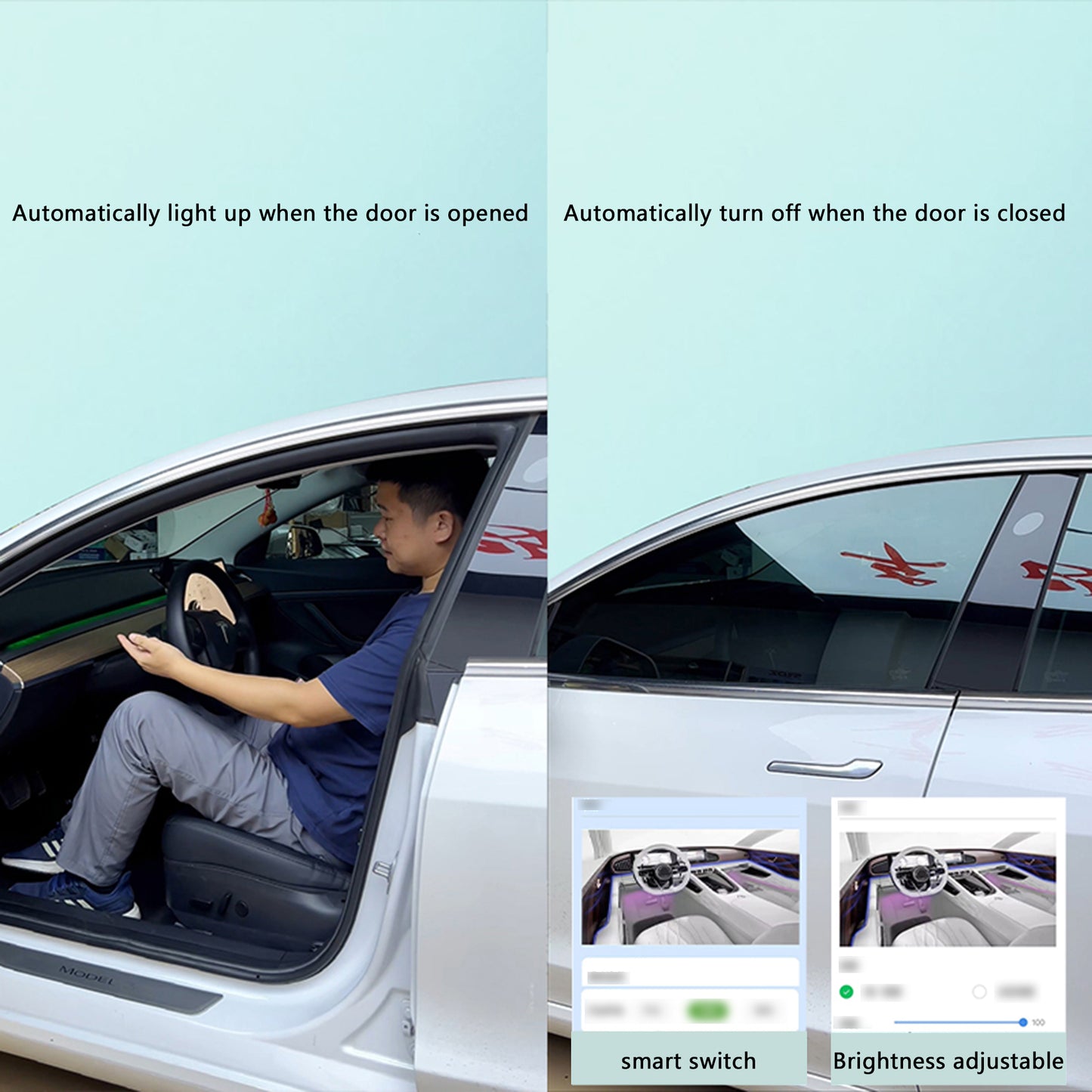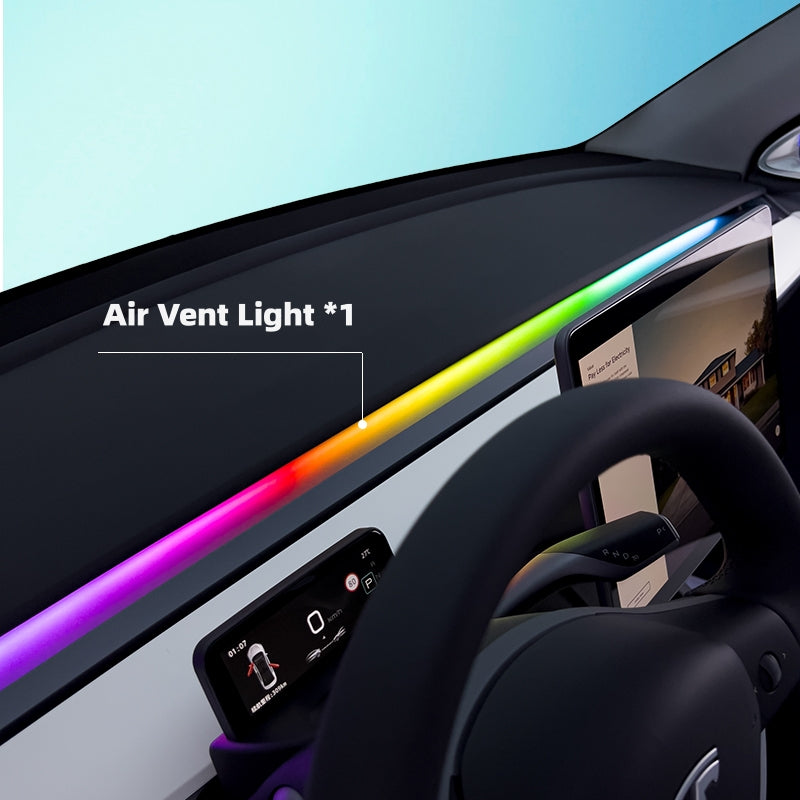
First impressions of the Tesla Model 3 Highland: Polished, with an innovative interface ditching traditional stalks!
After a full day with the Tesla Model 3 Highland refresh, the term "refined" perfectly encapsulates my impressions of this vehicle. This updated Model 3 boasts a remarkable overhaul, with over half of its parts replaced compared to the previous model, resulting in a seamless and substantial upgrade.
To provide a comparative analysis, I utilized my personal 2019 Tesla Model 3 from the Fremont factory in California. Additionally, I took a test drive in a current 2023 Model 3 rear-wheel drive manufactured in Shanghai right after experiencing the Highland Model 3, aiming to comprehend the cumulative impact of Tesla's continuous updates over the past four years on the vehicle.
I had anticipated the new 2023 model to fall somewhere in between my 2019 model and the Highland refresh in terms of ride quality, noise levels, and overall comfort. However, I was surprised to find that it drove remarkably similar to my older car in these aspects.
This led me to two conclusions. Firstly, my 2019 Model 3 has stood the test of time impressively well over the past four years, which is quite commendable. Secondly, it became evident that Tesla needed a more substantial overhaul of the vehicle to notably elevate the Model 3's performance.
Among the multitude of changes in the Highland refresh, I chose to highlight three areas that struck me as particularly impactful. While there are numerous other noteworthy updates, such as the sleeker exterior design, enhanced aerodynamics, safety enhancements, extended range, and improved connectivity, I opted to focus on the following aspects:
Enhanced Interior Comfort:
The Highland Model 3 introduces a host of interior upgrades that enhance its comfort and luxurious feel. Although I've found my Model 3 seats comfortable, particularly during long road trips, they tend to get a bit uncomfortable on hot days, especially for the lower back. The refreshed seats offer increased comfort, providing added side and thigh support. After an entire morning of driving, I experienced no discomfort at all. Additionally, the introduction of perforated seats with ventilation should effectively address the issue of sweaty backs during hot weather.
Refined Interior Materials:
Tesla has nearly eradicated hard surfaces within the cabin, except for the center console lid and steering wheel buttons. Virtually everything you touch, aside from the touchscreen, now features soft and pliable materials, including the entire dashboard, console surrounds, and door liners.
The attention to detail in the Highland refresh extends to even the smallest areas, like lining the bottom of the door bins with soft carpet to prevent rattling of items placed inside. Upon returning to the 2023 model, the contrast of hard plastic dash and door liners in the white interior felt notably inferior, lending a cheap and tacky impression.
The significant reduction in noise levels within the Model 3 cabin owes much to the elimination of hard surfaces, augmented by the adoption of acoustic double-paned glass throughout the Highland refresh. Enhanced aerodynamics also contribute, minimizing wind noise and boosting the car's range.
This amalgamation of updates renders the new Model 3 remarkably quiet, whether cruising along highways or traversing rougher roads. The minimal wind noise and limited road noise, complemented by the electric vehicle-specific Hankook Ion Evo tires, create an almost serene driving experience. In fact, I could barely discern oncoming cars passing on a single lane two-way road at 100 km/h. In contrast, the surrounding traffic was much more audible in the 2023 model on Sydney's roads, even at city speeds.
Enhancements in ride and handling have notably refined the Model 3 driving experience. The Highland refresh features softer springs and more intelligent dampers, resulting in a car that no longer harshly responds to sharp bumps. The improved suspension offers a better sense of balance, providing a smoother and more composed handling, especially around corners at higher speeds.
During typical city driving, the improved suspension contributes to the tranquility of the already comfortable and hushed cabin. Additionally, I observed that the steering in the new model feels less immediate, requiring more than two full turns lock to lock.
The most contentious update—the absence of stalks in the Highland refresh Model 3—initially raised doubts for many, including myself. However, after spending time with the car, I found myself adjusting positively to this change. Initially, I would glance down at the wheel while using the steering wheel buttons to indicate. Yet, gradually, it became almost instinctive, as I began thinking in terms of "bottom left, top right"—an intuitive approach based on the direction I was about to turn the wheel.
Engaging the indicator buttons proved especially convenient while driving with hands positioned at 9 and 3 o'clock, a habit instilled from previous driving courses. With hands in this placement, accessing the indicator buttons required only a slight movement of the thumb, allowing uninterrupted control of the wheel.
Activating autopilot via the right-hand scroll wheel also became effortless. I would advise against the single-click autopilot activation setting, as it deactivates cruise control entirely and prompts the vehicle to decelerate when signaling lane changes. Opting for the double-click setting, however, seamlessly transitions back to traffic-aware cruise control upon indicating.
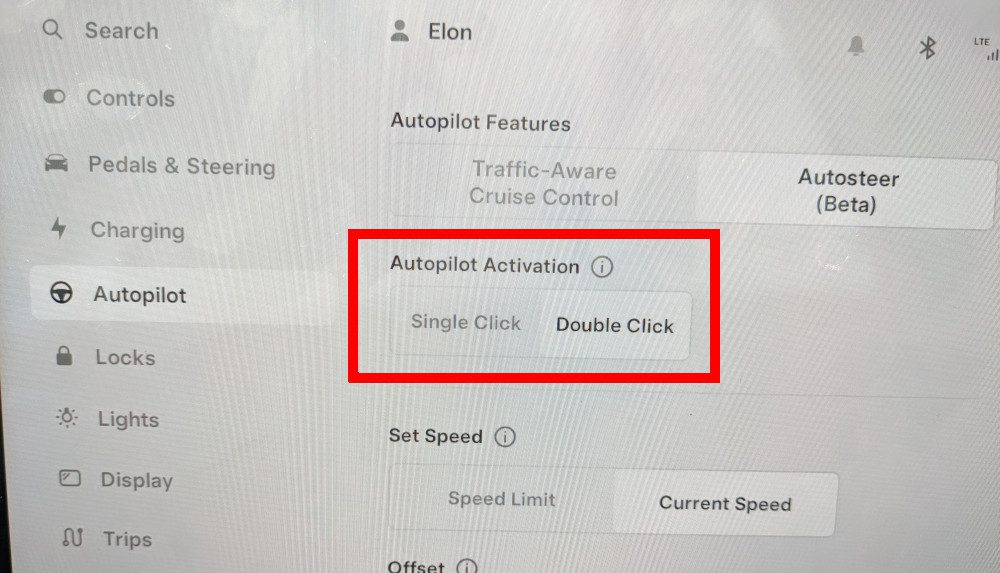
Shifting gears using the screen's swipe-up and swipe-down feature felt relatively intuitive, and I managed three-point turns and parking maneuvers without difficulty.
Adapting to this method might require more time compared to adjusting to the indicator buttons, given that gear changes are less frequent. Additionally, the car automatically shifts to park when the seat belt is unbuckled while stationary, or alternatively, you can tap the top corner of the screen to achieve the same.

If the absence of stalks seems like a potential dealbreaker, I'd advise taking more than a brief test drive to fully grasp and adjust to the new interface.
However, during my experience with the Highland Model 3, besides acclimating to the steering wheel buttons, I encountered a couple of minor drawbacks. Primarily, I noticed numerous false proximity alerts while driving at low speeds. For instance, the car frequently beeped and cautioned me to stop when accelerating from traffic lights or starting off from curbside parking.
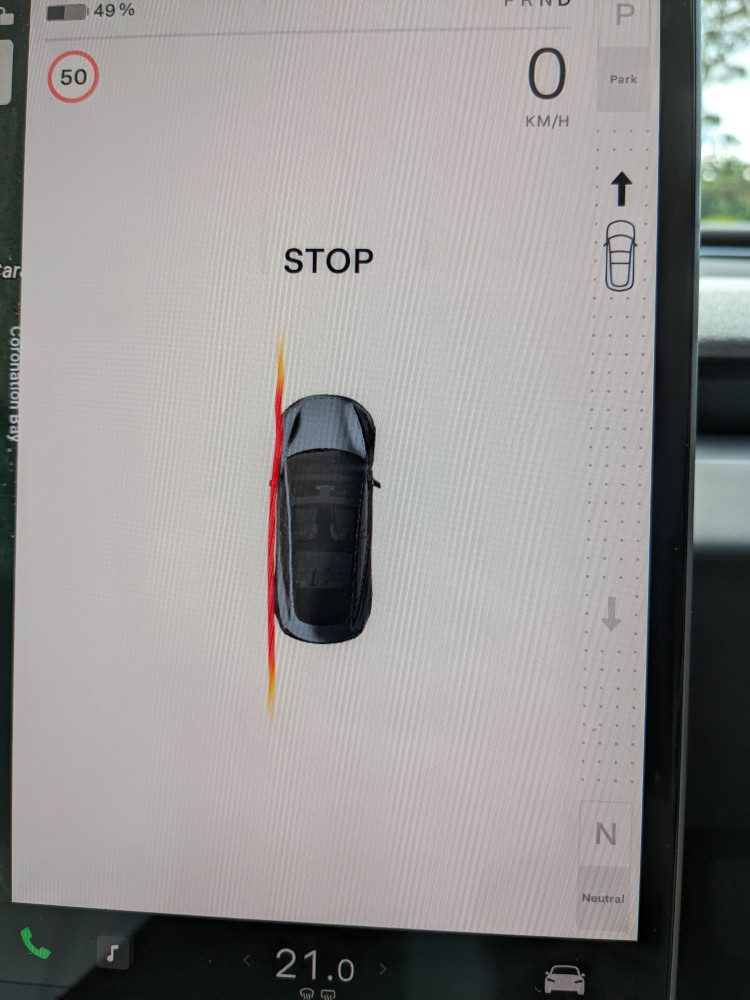
In the image displayed, the Highland Model 3 appears to identify the entire curb as an object, unlike my car that only recognizes taller objects nearing the car's corners. I speculated if this change was attributed to Tesla's shift to vision-based detection rather than ultrasonic sensors for object recognition.
It appears that way, especially considering that the latest models arriving in Australia still retain ultrasonic sensors, and this issue didn't arise during my drive with the 2023 Model 3. One hopes Tesla can enhance or resolve this issue through upcoming software updates.
The minor issue I encountered involved the indicator sound and autopilot chimes being notably loud in the Highland Model 3. Looking back, I suspect this might have been due to "Joe Mode" not being enabled, although I couldn't revisit the vehicle to confirm.
In summary, the Highland Model 3 refresh left a strong impression and delivers a substantial update to the aging Model 3. This refresh ensures the Model 3 remains competitive among newer electric sedans like the BYD Seal, Hyundai Ioniq 6, and the 2024 Polestar 2 refresh.
The absence of stalks or the distinctive Tesla brand might not suit everyone, yet there are numerous appealing aspects to this vehicle if you can overlook these points. I'd suggest test-driving it before dismissing the lack of stalks as a dealbreaker.
For those contemplating a new electric vehicle within this price range, the entry-level rear-wheel drive starting at $61,900 plus on-road costs offers fantastic value. Opting for the long-range all-wheel drive Model 3, priced $10,000 higher, adds a second electric motor to the front axle and significantly increases the WLTP driving range from 513 km to 629 km.

---------This article is partly excerpted from The Driven.



